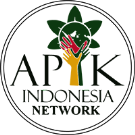KESESUAIAN KAWASAN UNTUK PENGEMBANGAN EKOWISATA HUTAN MANGROVE KUALA LANGSA
DOI:
10.29303/jbl.v3i2.567Published:
2020-08-01Issue:
Vol. 3 No. 2 (2020)Keywords:
Ecotourism, Tourism suitability index, MangroveArticles
Downloads
How to Cite
Downloads
Metrics
Abstract
Langsa City is mostly in the form of land and coastal areas, especially the Kuala Langsa area which has the potential to be developed into an ecotourism development area because the mangrove ecosystem is still natural and preserved. This study aims to determine the level of land suitability for the development of mangrove forest ecotourism in Kuala Langsa. Primary data in the form of mangrove density, mangrove thickness, types of mangroves, tides, and biota objects were obtained through observation at 6 observation locations using Purposive sampling and Line transect point methods, while secondary data included geographical conditions, and tidal data obtained through literature studies. Vegetation data were analyzed by calculating plant species density and tourism suitability analyzed using tourism suitability index (IKW). Mangrove species found at the study site included, Bruguiera gymnorrhiza, Ceriops tagal, Rhizophora apiculata, Rhizophora mucronata, Sonneratia caseolaris and Xylocarpus granatum. The results showed that the IKW value of 60% included in the S2 category (as appropriate). The limiting factor is the density of mangroves which only have a value of 8 with the S3 conformity category (as conditional). With the limiting factor is the density of mangroves which only have a value of 4 with the suitability category S3 (not suitable). As for suggestions that can be given to the manager of Kuala Langsa mangrove forest Ecotourism so that the existence of Ecotourism can be sustainable is the need for Pentahelix Synergy in the management of the ecotourism.
References
Iswahyudi. 2019. Kebijakan Pengolaan Ekosistem Hutan Mangrove Berkelanjutan Kota Langsa. Disertasi. Sekolah Pascasarjana Institut Pertanian Bogor : Bogor.
Iswahyudi. 2020. Lingkungan Biofisik Hutan Mangrove Kota Langsa, Aceh. Jurnal of Natural Resources and Environmental Management. 10(1) : 98-110.
Kusmana, C. 1997. Ekologi dan Sumberdaya Ekosistem Mangrove, Makalah Pelatihan Pengelolaan Hutan Mangrove Lestari Angkatan I PKSPL. Institut Pertanian Bogor. Bogor.
Kusmana, C., Wilarso S., Iwan, H., Pamoengkas, P., Wibowo, C., Tiryana, T., Triswanto, A., Hamzah, Y. 2005. Teknik Rehabilitasi Mangrove. Bogor : Fakultas kehutanan Institut Pertanian Bogor : Bogor.
Latupapua, Y., T., Ronny, L., Fitrah D. S. F. 2019. Analisis Kesesuaian Kawasan Mangrove sebagai Objek Daya Tarik Ekowisata di Desa Siahoni, Kabupaten Buru Utara Timur, Propinsi Maluku. Jurnal Sylva Lestari. 7(3):267-276.
Majid, A., B., Patana, P., Lesmana, L. 2014. Studi Potensi Ekowisata di Kuala Langsa Provinsi Aceh. Aquacoastmarine. 3(2):44-54.
Mirerra, O.D, J. Ochiewo, F. Munyi, and T. Muriuki. 2013. Heredity or traditional
knowledge: Fishing tactics and dynamics of artisanal mangrove crab (Scylla serrata) fishery. Ocean andCoastal Management, (84):119-129.
Nurlailita. 2015. Evaluasi Kesesuaian Lahan dan Strategi Rehabilitasi Hutan Mangrove Kecamatan Birem Bayeun dan Kecamatan Rantau Selamat Kabupaten Aceh Timur. Tesis. Sekolah Pascasarjana Institut Pertanian Bogor : Bogor.
Putriningtias, A., Faisal, T., M., Komariyah, S., Bahri, S., Akbar, H. 2019. Keanekaragaman Jenis Kepiting di Ekosistem Hutan Mangrove Kuala Langsa, Kota Langsa, Aceh. Jurnal Biologi Tropis. 19(1):101 – 107.
Rahim, S., D., W., K., Baderan. 2017. Hutan Mangrove dan Pemanfaatannya. Yogyakarta : Budi Utama. Yogyakarta.
Ramadani, R., Zidni I., N., M.Si. 2019. Pengembangan Potensi Ekowisata Hutan Mangrove di Desa Kuala Langsa Kecamatan Langsa Barat Kota Langsa Aceh. Jurnal Biologica samudra. 1(1);041-055.
Roza, M., Dedi, H., dan Triyatno. 2018. Strategi Pengembangan Ekowisata Mangrove di Desa Rawa Mekar Jaya Kecamatan Sungai Apit Kabupaten Siak Provinsi Riau. Jurnal Buana. 2(4):2615 – 2630.
Sadik, M., Muhiddin, A. H., dan Ukkas, M. 2017. Kesesuaian Ekowisata Mangrove Ditinjau Dari Aspek Biogofisik Kawasan Pantai Gonda Di Desa Laliko Kecamatan Campalangian Kabupaten Polewali Mandar. Jurnal Ilmu Kelautan SPERMONDE Universitas Hasanuddin 2(2):25-33
Sari, I. P., Defri, Y., Evi, S. 2015. Analisis Kelayakan Ekosistem Mangrove Sebagai Objek Ekowisata di Desa Teluk Pambang Kecamatan Bantan Kabupaten Bengkalis. Jom Faperta.Vol. 2 No 1
Setiawan, H. 2013. Status Ekologi Hutan Mangrove Pada Berbagai Tingkat Ketebalan. Jurnal Penelitian Kehutanan Wallacea. 2(2):104-120.
Siregar, D., S. 2013 . Inventarisasi Tingkat Kerusakan dan Cadangan Karbon di Hutan Lindung Mangrove Kuala Langsa Kota Langsa-Aceh. Tesis. Program Studi Agroteknologi Universitas Sumatera Utara : Medan.
Susi, S., Adi, W., dan Sari, S. P. 2018 Potensi Kesesuaian Mangrove Sebagai Daerah Ekowisata Di Susun Tanjung Tedung Sungai Selan Bangka Tengah. Akuatik: Jurnal Sumberdaya Perairan 12(1):65-73. SOI:10.33019/akuatik.vl2i.693.
Tomlinson, P., B. 1994. The Botany of Mangroves. Cambridge (UK): Cambridge University Press.
Tuwongkesong, H., Mandagi, S., V., Schaduw, J., N. 2018. Kajian ekologis ekosistem mangrove untuk ekowisata di Bahowo Kota Manado. Majalah Geografi Indonesia. 32(2):177-183.
Zurba, N. 2017. Pengelolaan Potensi Sumberdaya Ekosistem Mangrove di Kuala Langsa, Aceh. Tesis. Sekolah Pascasarjana Institut Pertanian Bogor : Bogor.
License
The Authors submitting a manuscript has understood that if accepted for publication on Jurnal Belantara, the copyright of the article shall be assigned to Jurnal Belantara of the Forest Study Program University of Mataram as the publisher of the journal. Copyright encompasses rights to reproduce and deliver the article in all forms and media, including reprints, photographs, microfilms, and any other similar reproductions, as well as translations.
Jurnal Belantara of the Forest Study Program University of Mataram and the Editors make every effort to ensure that no wrong or misleading data, opinions, or statements be published in the journal. In any way, the contents of the articles and advertisements published in Jurnal Belantara are the sole responsibility of their respective authors and advertisers.
We strongly encourage that manuscripts be submitted to the online journal system in http://belantara.unram.ac.id/index.php/JBL/index. Authors are required to create an account and submit the manuscripts online. For submission inquiries, please follow the submission instructions on the website. If the author has any problems with the online submission, please contact Editorial Office at the following email: belantara@unram.ac.id
Contributors are responsible for obtaining permission to reproduce any materials, including photographs and illustrations, for which they do not hold the copyright and for ensuring that the appropriate acknowledgments are included in the manuscript.
Users of this website will be licensed to use materials from this website following the Creative Commons Attribution 4.0 International License. No fees charged. Please use the materials accordingly.




